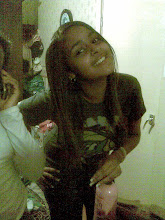The media has the power through selection and reinforcement to give us very influential portrayals of a whole range of groups, situations and ideas. We interpret theses representations in different ways depending on the values and assumptions we carry around in our own heads. Representation is not how things are presented but also how we react to media text in order for us to understand the portrayal of things, in this case the youth culture.
Throughout my research I found out that most representations of the youth culture are usually negative. World strictest parents was an example of this because the youths in the programme went out drinking, did drugs, smoked and had underage sex, which was most probably done because of peer pressure or by following the crowd and also done without discipline. However as the show progresses their attitude towards life and towards their parents changes dramatically. Also in the film Adulthood youths are again negative portrayal because their main focus revolves around sex, drugs and crime. They are given a self centred ideology where the world revolves around them with slight expectations for example Alisha has a baby and she is her main priority.
From my research it’s clear to state that youths are influences by what they see through the media, institutions have a large impact on youths for instance the female gender representations for youths are developed by girl magazines, the representations of girl magazines are both positive and negative.
Most young females are able to see themselves in privileged positions as opposed to the usual subservient roles developed in other media. Male magazines such as Loaded and FHM which focus on other male lifestyles such as cars, sports, holidays and clothes as well as females. The press has little youth representations because it tends to sell to youths when they are really aiming to sell to adults. From a Marxist point of view they would agree with this statement because they believe that “institutions feed the audience with what they want by aiming to protect their economic interest.
In today’s society, we live in a world where social networking plays a very important role. Institutions allow everyone to watch episodes online, have fan pages, adverts on popular sites, etc these would give a sense of communication and give audiences a chance to express there opinions, Adulthood has an official site, a twitter and facebook page. Another example of using E-media, is when audiences can watch their particular text on the internet, for example BBC iplayer allows us to watch ‘world’s strictest parents’.
Many youth are stereotyped because of the way they dress, their race, where they live and how they talk .For instance a boy dressed in black with his hoody up and trousers down low and living in an estate is automatically bad and represented negatively .As most boys with hoods on are "gangsters and intimidating. Strauss states that the savage mind has the same structure as the civilised mind and that human characteristics are the same everywhere. So once the audience witness a way a teenager is portrayed through the media they automatically believe that all youths are the same.
Thursday, 9 December 2010
A 500 analytical summary essay - focusing on the wider issues and impact of your results
Posted by Amnaa ! at 12:13
Subscribe to:
Post Comments (Atom)

0 comments:
Post a Comment